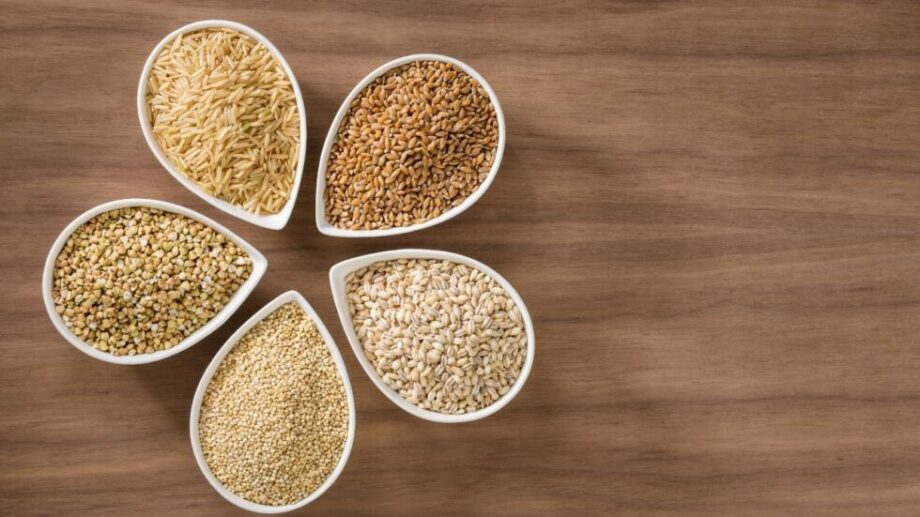Understanding Whole Grain and Whole Wheat
What is Whole Grain?
Whole grain refers to grains that contain all three parts of the kernel: the bran, germ, and endosperm. This includes whole wheat, as well as other grains such as oats, barley, quinoa, and brown rice.
What is Whole Wheat?
Whole wheat specifically refers to grains derived from the wheat plant that contain all parts of the kernel, similar to whole grain. However, it specifically applies to wheat-based products.
Nutritional Comparison
Fiber Content
Whole grains, including whole wheat, are rich in dietary fiber, which supports digestive health, helps regulate blood sugar levels, and promotes satiety. The fiber content of whole grains contributes to their nutritional value and health benefits.
Vitamin and Mineral Content
Whole grains are a good source of vitamins and minerals, including B vitamins, iron, magnesium, and zinc. These nutrients play essential roles in energy metabolism, immune function, and overall health.
Protein Content
Whole grains, including whole wheat, provide plant-based protein, making them a valuable source of protein for vegetarians and vegans. Protein is essential for muscle repair and growth, hormone production, and immune function.
Health Benefits
Reduced Risk of Chronic Diseases
Consuming whole grains, such as whole wheat, has been associated with a reduced risk of chronic diseases, including heart disease, type 2 diabetes, and certain types of cancer. The fiber, vitamins, minerals, and antioxidants found in whole grains contribute to these health benefits.
Weight Management
Whole grains, due to their fiber content and satiating properties, can help promote feelings of fullness and reduce overall calorie intake, making them a valuable component of weight management and healthy eating plans.
Improved Digestive Health
The fiber content of whole grains supports digestive health by promoting regularity, preventing constipation, and nourishing beneficial gut bacteria. Including whole grains in your diet can contribute to a healthy digestive system and optimal gastrointestinal function.
Common Misconceptions
Whole Grain vs. Whole Wheat Confusion
One common misconception is the interchangeable use of the terms “whole grain” and “whole wheat.” While whole wheat is a type of whole grain, not all whole grains are wheat-based. It’s essential to understand the distinction between these terms when making food choices.
Processing and Enrichment
Another misconception is that all wheat products labeled “whole wheat” are necessarily whole grain. Some products may be made from refined wheat flour and then enriched with vitamins and minerals to mimic the nutritional profile of whole grains. However, they lack the inherent benefits of true whole grains.
Frequently Asked Questions (FAQs)
What’s the difference between whole grain and whole wheat bread?
Whole grain bread is made from a variety of whole grains, while whole wheat bread specifically uses whole wheat flour. While both can be nutritious choices, whole grain bread may offer a more diverse array of nutrients.
Is whole wheat healthier than white bread?
Yes, whole wheat bread is generally considered healthier than white bread because it retains the bran and germ of the wheat kernel, providing more fiber, vitamins, and minerals. White bread, on the other hand, is made from refined wheat flour, which lacks these nutrients.
Can I eat whole wheat if I have gluten intolerance?
Individuals with gluten intolerance or celiac disease should avoid whole wheat and other wheat-based products, as they contain gluten, a protein that can trigger adverse reactions in susceptible individuals. Instead, they can opt for gluten-free whole grains such as quinoa, brown rice, and oats.
Are whole grain and whole wheat pasta the same thing?
Whole grain pasta is made from a variety of whole grains, while whole wheat pasta specifically uses whole wheat flour. Both can be nutritious choices, but whole grain pasta may offer additional nutritional benefits from diverse grains such as quinoa, barley, or spelt.
Can I lose weight by switching to whole wheat products?
Switching to whole wheat products as part of a balanced diet and healthy lifestyle may support weight loss or weight management goals due to their higher fiber content and lower glycemic index compared to refined grains. However, individual results may vary, and overall dietary patterns are essential for success.
How can I incorporate more whole grains into my diet?
You can incorporate more whole grains into your diet by choosing whole grain versions of bread, pasta, rice, and cereal. Additionally, you can experiment with diverse whole grains such as quinoa, barley, bulgur, and farro in salads, soups, stir-fries, and side dishes.
Are there any downsides to consuming whole wheat or whole grains?
While whole wheat and whole grains offer numerous health benefits, some individuals may experience digestive discomfort or sensitivity to certain grains. Additionally, excessive consumption of whole grains may contribute to calorie intake if not balanced with other nutrient-dense foods in the diet.
Conclusion
Whole grain and whole wheat are terms often used interchangeably, but they refer to distinct components of grains with unique nutritional profiles and health benefits. By understanding the differences between these terms, you can make informed choices for your diet and harness the nutritional power of whole grains for optimal health and well-being. Whether you’re seeking to reduce the risk of chronic diseases, manage your weight, or support digestive health, incorporating whole grains into your diet can be a valuable step towards achieving your health goals.
- The Ultimate Review Top Delta 8 Gummies Unveiled By Golden Goat CBD - April 23, 2024
- Sweet Serenity: Navigating the World of Just Delta CBD Gummies - April 23, 2024
- Whole Grain vs. Whole Wheat Whats the Difference? - April 13, 2024
